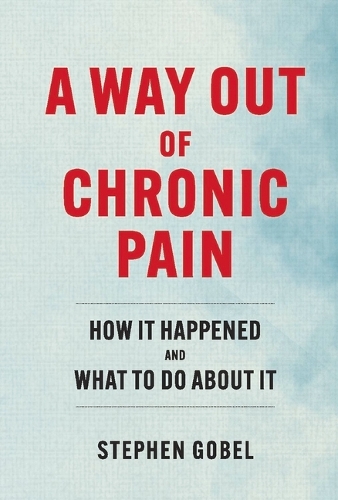
A Way Out Of Chronic Pain: How It Happened and What To Do About It
(Hardback)
Publishing Details
A Way Out Of Chronic Pain: How It Happened and What To Do About It
By (Author) Stephen Gobel
BookBaby
BookBaby
10th August 2022
United States
Classifications
General
Non Fiction
Physical Properties
Hardback
240
Width 158mm, Height 234mm, Spine 20mm
517g
Description
This book, by a pain research scientist, is written for everyone who is currently experiencing chronic pain. It is written for everyone over the age of fifty. It is written for everyone who has experienced chronic pain in the past and wants to do something to try to prevent future recurrences.
The book discusses the roles of sedentary life styles, posture, chair design and the loss of range of motion in chronic pain.
The book explains how to use compression at sites of muscle shortening, static stretches and dynamic movements of shortened muscles to address the following kinds of pain:
Low Back Pain
Hip Pain
Knee Pain
Wrist and Hand Pain
Jaw and Temporomandibular Joint Pain
Shoulder, Neck and Upper Back Pain
Author Bio
The author is a basic scientist who has studied pain mechanisms during his professional career. Following graduation from New York University College of Dentistry in 1963, he received training in neuroscience on a United States Postdoctoral Fellowship. He spent most of his professional career at the National Institutes of Health (NIH) conducting basic research in pain neural circuitry in the spinal cord and brain as well as the effects of nerve injury on that circuitry. He has also administered an NIH advisory panel that reviewed grant applications from faculty members at American universities on the subject of pain. Most recently, he has administered the program on spinal cord injury and head trauma for the Commonwealth of Kentucky.
In addition to his basic science experiences, he has dealt with several of his own episodes of chronic back, hip and knee area pain as well those involving family members and friends. Some of these episodes have involved treatment by professional physical therapists along with many different self-designed trial-and-error approaches. He has written this book because he is confident that the lessons learned from these experiences can be broadly applied to chronic pain situations in many parts of the body and therefore can be of help to many people who are currently suffering with chronic pain.
